Personalization means injecting additional information about your recipients into your emails.
Personalizing cold emails can be very beneficial for your campaign. Not only can it get you more replies, but it can also improve the deliverability of your emails.
However, if done poorly, personalization can also damage your campaign.
In this article, I’ll cover:
- Goals for personalizing cold emails,
- Science behind personalization,
- How to personalize your campaigns.
Personalization vs. ICP targeting
The concept of personalization is closely aligned with ICP research. You can use similar data points both to find prospects for your campaigns and to personalize your emails.
For example, your ICP could be an account executive at a US-based SaaS company founded after 2021, and you could use the company’s job offers to personalize your email.
Or your ICP could be an account executive at a US-based SaaS company currently hiring, and you could use the company's age as the personalization variable.
But there’s also a critical difference between personalization and ICP targeting:
When you send a campaign to an ICP segment, you can create copy that will speak directly to that segment’s needs and interests. But without personalization, every email you send in that campaign will be the same.
On the other hand, with personalization, you inject prospect-specific information so that every email you send in that campaign is different.

What’s the goal of cold email personalization
I firmly believe that bad examples of personalization come from people who personalize their emails without a clear goal.
Here’s what you should aim to achieve with personalization:
Better email deliverability
A good way of ensuring high email deliverability is to make your emails look the opposite of spam.
And one essential characteristic of spam is that every email is the same, no matter who the recipient is.
If there are slight differences in your emails, your campaign will look less spammy to email providers, and your deliverability will improve.

Higher open rates
When it comes to getting your email opened, the subject line you use is a critical factor.
You may personalize the subject line to make it more enticing to the recipient.
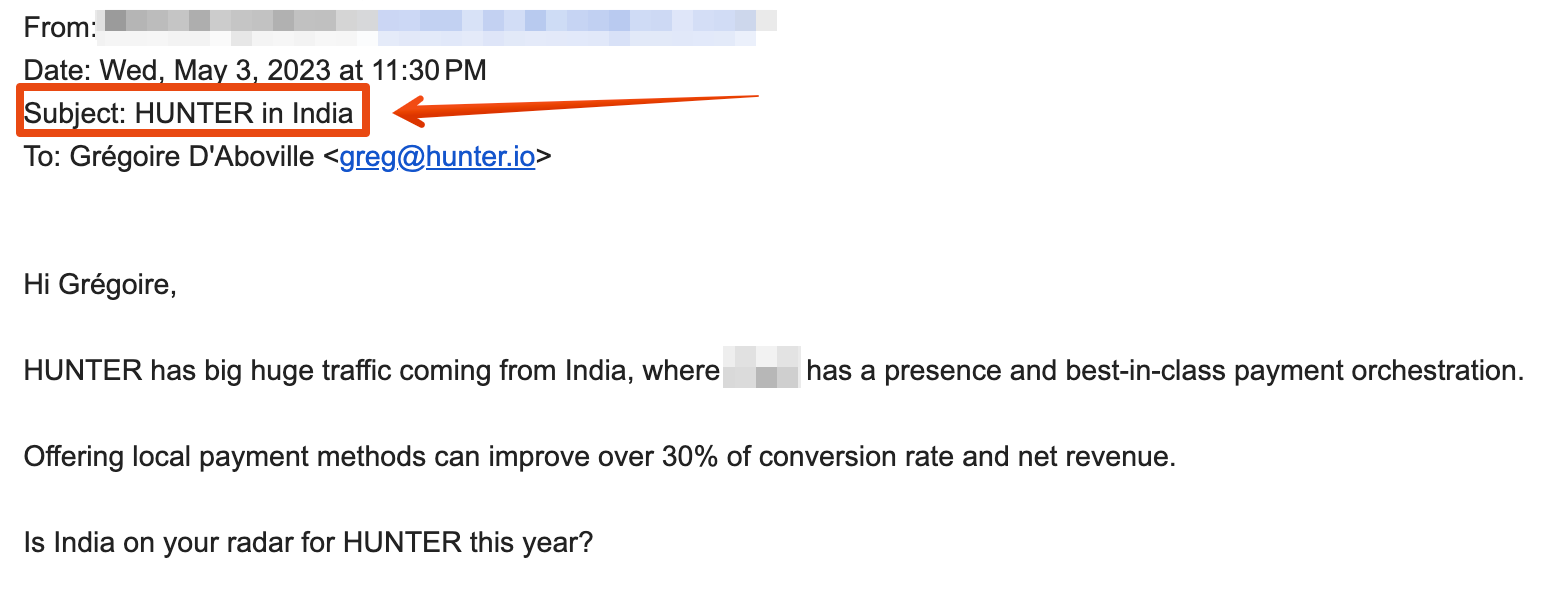
Higher reply rates
Personalization is a chance to be more persuasive and improve your reply rates.
Using Robert Cialdini’s 6 Principles of Persuasion (reciprocity, commitment or consistency, social proof, authority, liking, and scarcity), email personalization can contribute to:
- Reciprocity: By showing that you know the recipient and the specific situation of their business, you’re showing that you’ve put in the effort to research them. The more difficult a given piece of information is to get, the more likely it is that the recipient will feel obliged to reciprocate and reply to your message.

- Authority: You can personalize your message in a way that demonstrates your authoritativeness – a deep understanding of the prospect’s industry, interests, and needs (e.g., using insider lingo or showing that you understand the competitive landscape.)

- Liking: Finally, you can use personalization to build a relationship and make the recipient… like you. With cold emails, there are two main ways to make that happen: paying a compliment (e.g., about a personal achievement or positive news about the company) or proving similarity (e.g., similar interests, backgrounds, connections, problems.)

Personalization-privacy paradox
Personalization has been used and researched in marketing and sales beyond email outreach. Researchers found that, on the one hand, people enjoy receiving personalized messaging, and on the other hand, they may react negatively to personalization if they feel it violates their privacy.
This discrepancy is known as the personalization-privacy paradox.
A common example is targeted cookie-based display ads. While they may show you the products you’re genuinely interested in, you know well that you’re receiving these ads because of previous online activity, which may evoke a negative response.
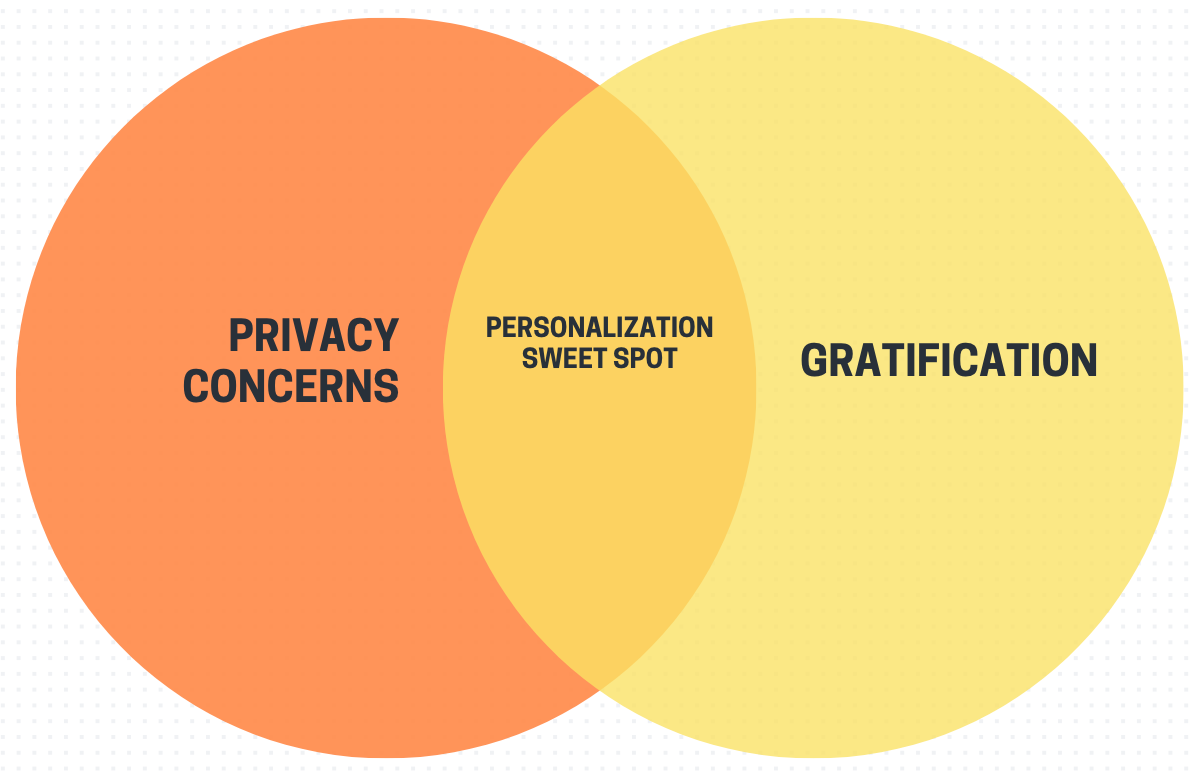
So, here’s the key question: Where’s the line between acceptable and unacceptable levels of personalizing a cold email?There’s actually some research that can help you answer that for yourself:
- Researchers propose personalization can provide so-called “content gratification.” Customers enjoy receiving messages that reflect their preferences and context or provide gains and savings.Lesson: You can make your cold emails more gratifying by personalizing them with a focus on the benefits for the recipient.
- One study shows customers may see personalization as valuable despite privacy concerns, provided it’s relevant to their context. Lesson: Only use personal information if it’s justified in the context of what you’re offering.
- It was also found that consumers who value information transparency are less likely to participate in personalization.Lesson: Understand your audience; the more tech-savvy your recipients are, the more likely they are to understand the issue of digital privacy and the stronger their reaction to excessive personalization will be.
- Customers also react negatively to personalization if it’s too invasive.
Lesson: Use personalization that only leverages information that’s willingly shared by your recipients and isn’t sensitive.
How to personalize cold emails at scale
With everything I’ve learned about personalization, I came up with the following rules for how to personalize your cold emails:
- Always personalize. Personalization is table stakes. Using your recipient’s first name and company name is an absolute minimum you must implement, even if only to avoid the spam filters.
- Stay relevant. Don’t use personalization only to show how much you know about the recipient. Use information relevant to the context of your email, and skip the rest.
- Don’t be intrusive. It’s not difficult to learn an awful lot about your prospect. But just because people share their personal information on social media doesn’t mean they want strangers to use that information in cold emails.
Personalization methods
If you’re only starting your cold email journey and looking for a successful email formula, you can manually personalize your cold emails.
But as you increase your sending volume and send hundreds of emails weekly, you need a more scalable, automated solution.
Cold email tools like Hunter Campaigns let you use custom attributes (merge tags) to inject personalization variables into your email copy automatically.
This means that you can enrich your mailing list with additional variables you’ll later use to automatically create personalized emails.
Here’s how it works in practice:
- You create an additional variable in your mailing list.

- You upload your list to Hunter and create a new variable to map to the variable in your CSV.
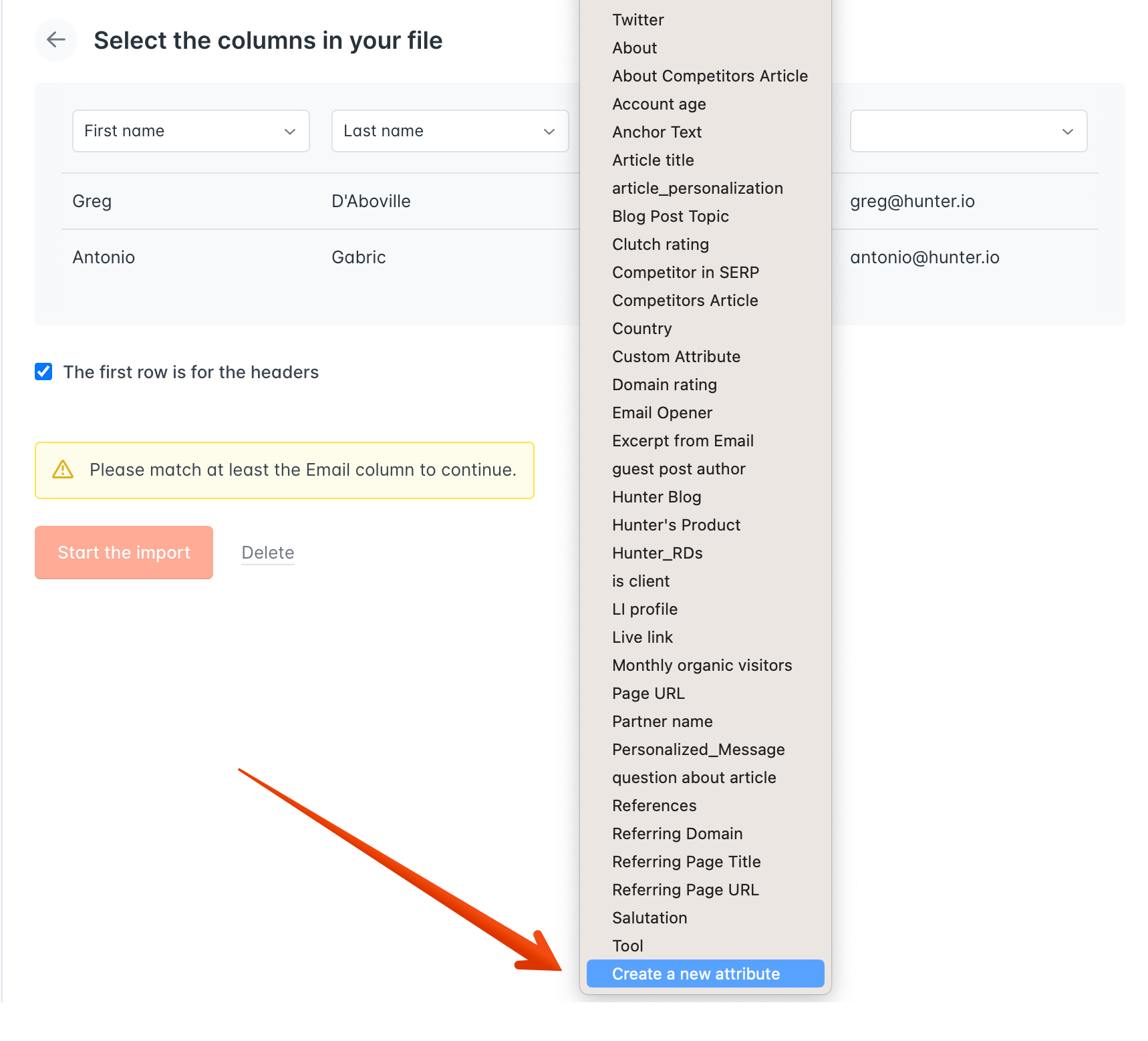
- You insert the custom attribute to your campaign content.
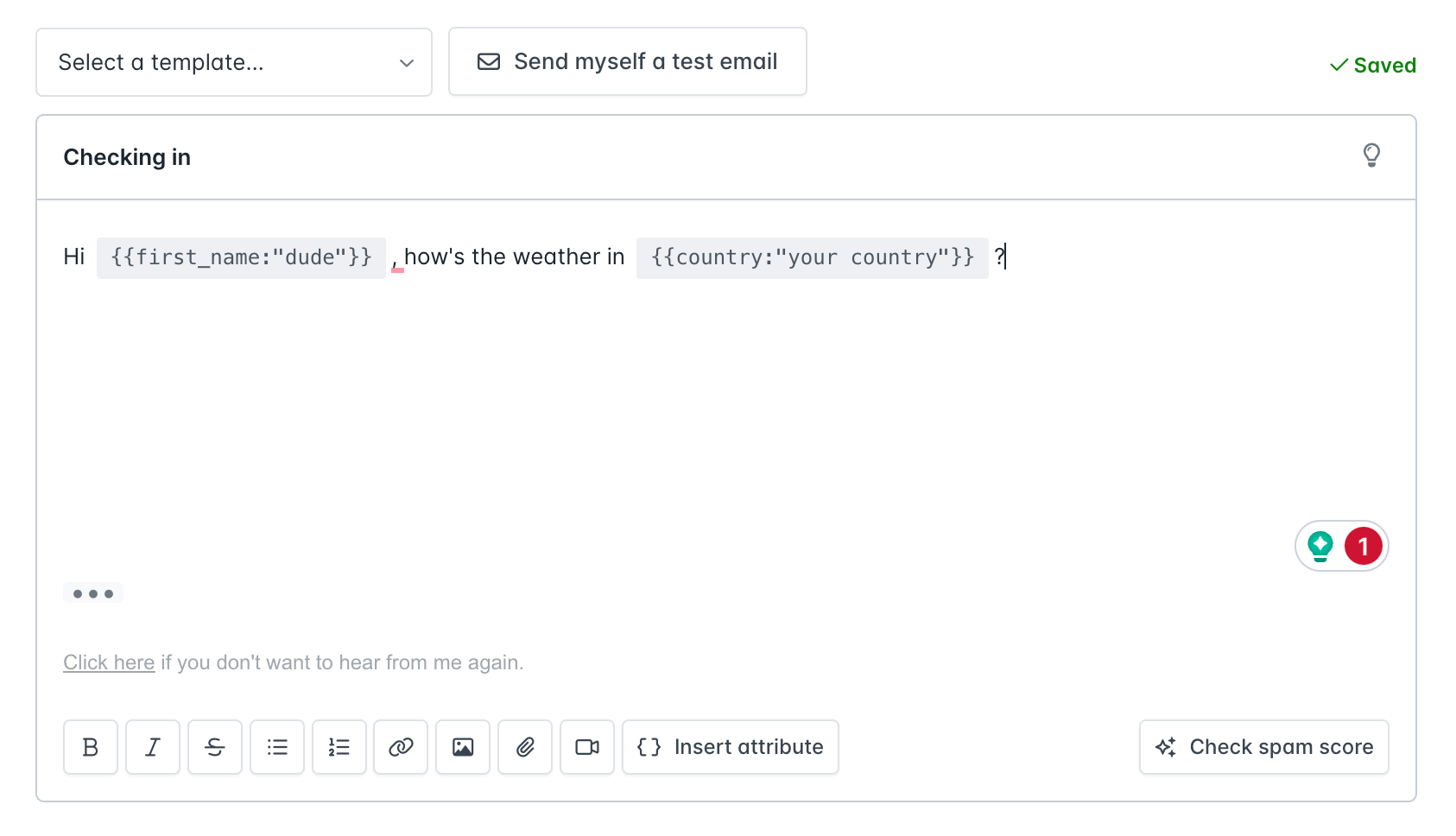
- Hunter automatically creates personalized emails by injecting the values you provided.

Personalization tactics
Personalization is table stakes. The absolute minimum is:
- Personalizing the salutation line by injecting the recipient’s name (Hi {{firstname}}),
- Using the company name whenever applicable.
It won’t make your recipient’s jaw drop, but it will reassure them that your message was meant for them. And it will introduce some variance to your campaign, which can help your deliverability.
That being said, here are some more advanced tactics:
Information scent
Information scent is my favorite personalization tactic. The term comes from the field of information foraging.
Human users estimate how much useful information they are likely to get on a given path, and after seeking information compare the actual outcome with their predictions. When the information scent stops getting stronger (i.e., when users no longer expect to find useful additional information), the users move to a different information source.
With this tactic, your goal is to:
- Make your subject line smell like information; make a promise to the recipient that there’s interesting information waiting for them if they open your email.
- Deliver on your promise in the email copy.
Examples:
- If your ICP is a company that’s using Intercom’s live chat feature on their website, you might target CTOs with the following email:
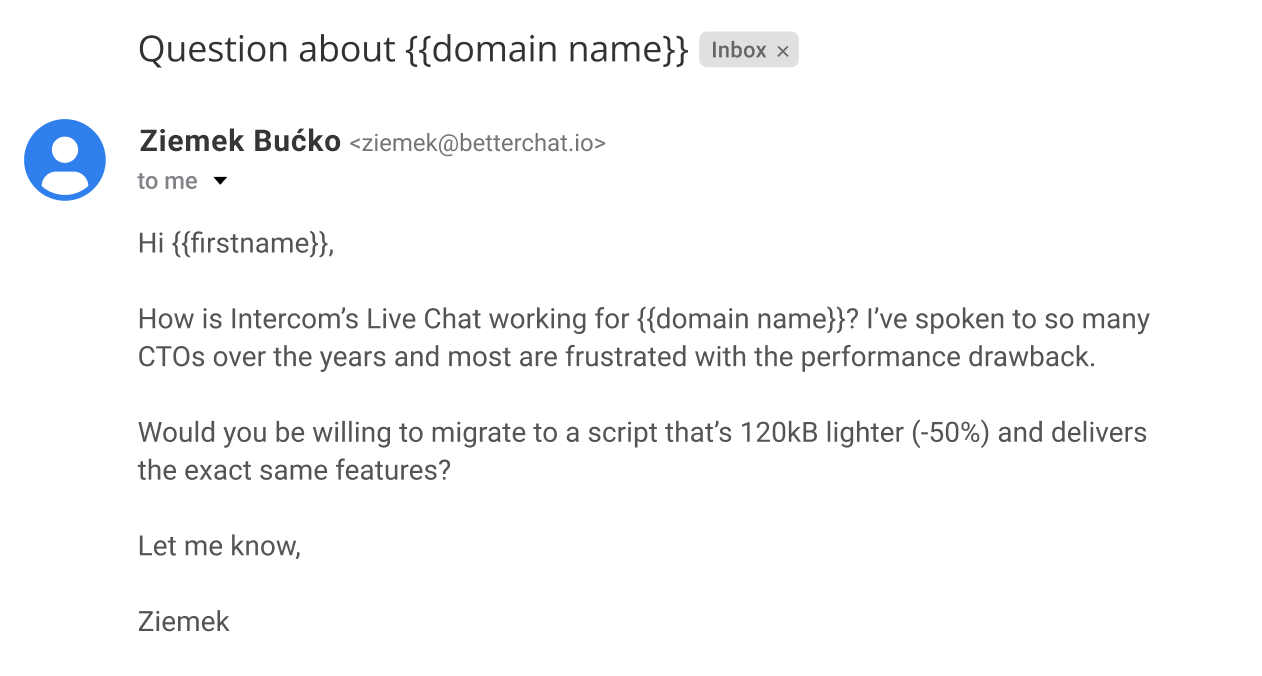
- If your ICP is a marketing manager and you’re pitching your content editing service, you could use the following email:
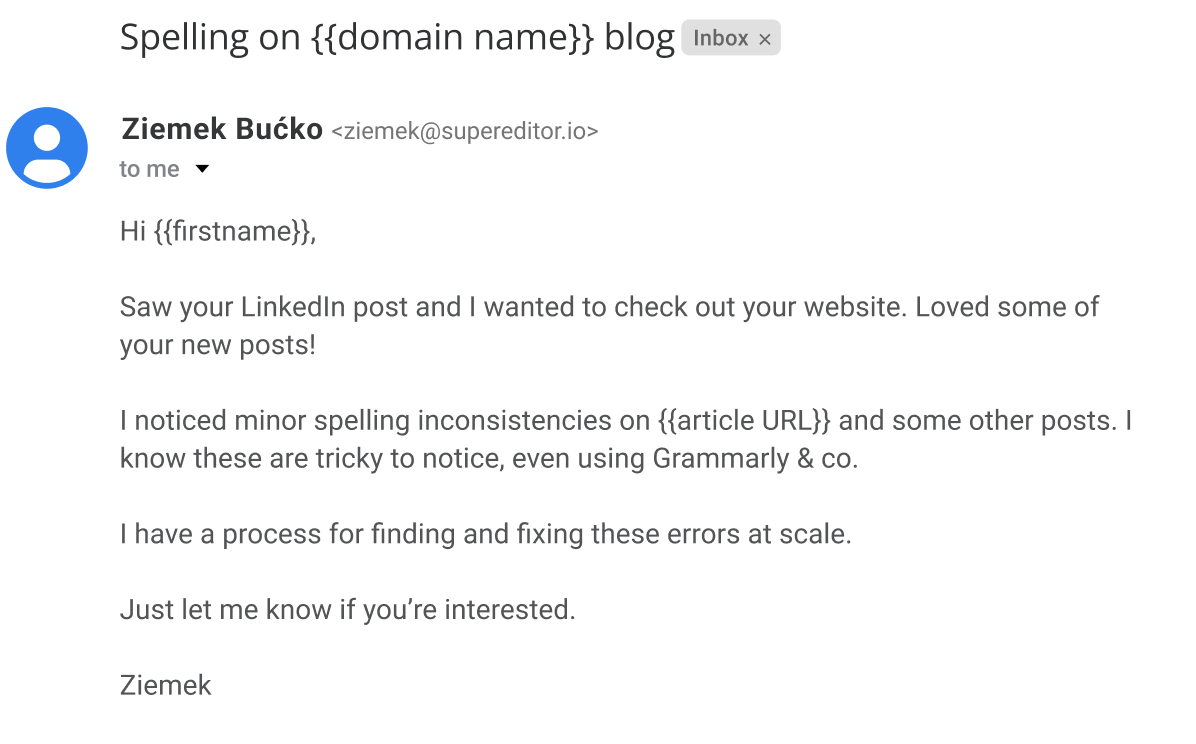
Pros:
- If you can deliver relevant information to the recipient, you’ll build up trust and reciprocity, increasing the odds of getting a positive reply.
Cons:
- Implementing information scent well requires you to understand your prospects deeply. You need knowledge and experience in the industry to make it work.
Milkshake
Milkshakes are cold and sweet.
Cold emails? Just cold. But with personalization, you can make them sweet.

There are two ways to make that happen:
- Paying your recipient a compliment, and/or
- Leveraging shared or similar experience, background, etc.
Examples:
- Depending on who you’re targeting, you can pay a compliment to the part of business they’re involved in. For example, if you’re targeting graphic designers, you can directly compliment the website:

- If you’re using cold emails for digital PR, you can use the recipient domain’s Domain Rating score (it’s a website authority metric.)

Pros:
- The milkshake technique is easy to implement once you have the right data.
- It’s designed to make the recipient like you, which increases your chances of success.
Cons:
- With some prospects, especially SMBs, who may not be sharing as much information on the web, it might be challenging to find good data points to leverage.
Icebreaker
Icebreaker is a tactic that has become very popular in the cold email industry, especially with the rise of generative AI. It involves creating a fully personalized opening line that builds rapport with the recipient.
Icebreaker is slightly different than most tactics because it doesn’t need to relate to your offer directly. It aims to be a loose comment that indicates your genuine interest in the prospect.
Icebreakers are often created using AI. You can use tools to make the process easier, like Lyne.ai. These tools use a source you provide, like the prospect’s website or LinkedIn profile, and generate personalized email elements as the output.
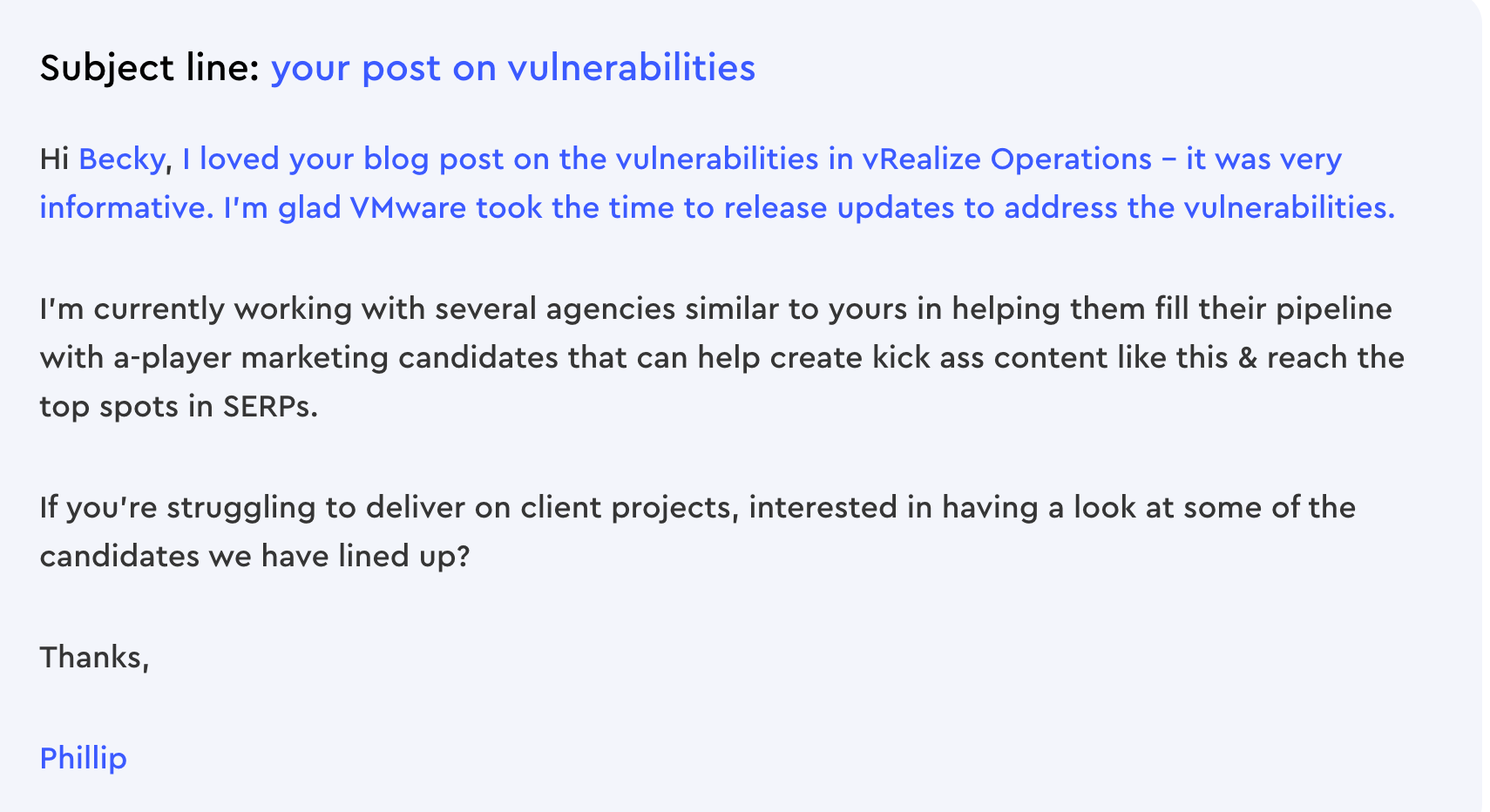
However, as with anything AI, you need to double-check if you’re getting satisfactory results. If you’re automatically creating the icebreaker, you’re tricking the recipient into thinking you know more about them than you really do. And if your automation doesn’t work well, the trick won’t work either.
Personally, I’m not a fan of this approach because it’s excessively manipulative (unless you manually research the prospects to write your icebreakers.)
Pros:
- It can make your email feel very relatable – you’re citing a detail about the prospect that indicates your sincere interest in them
Cons:
- It’s very difficult to scale and make the icebreakers feel genuine.
- If the quality of the icebreaker isn’t there, your recipients will notice, and their reaction might be very negative.

